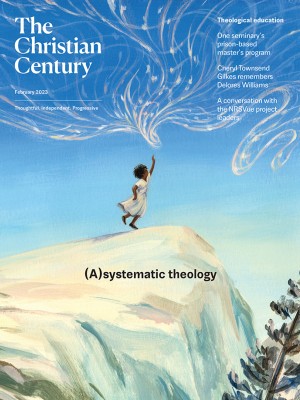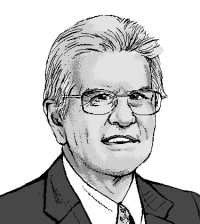Smashing statues
Iconoclasm isn’t just an expression of anger. It’s how we try to make new worlds.
Sometimes, bored indifference can sting worse than outright hostility. I was telling a friend about my present book project, The Storm of Images, which concerns the iconoclasm struggle in the Byzantine Empire during the eighth and ninth centuries. In my view, it’s a pivotal moment in the definition of Eastern and Western Christian traditions, so I was somewhat deflated when my friend asked, in effect, Why on earth would you want to do that? It’s so long ago, and the whole story is, well, Byzantine, a word that through the centuries has acquired plenty of negative baggage.
Fortunately, I was able to articulate a response that went beyond the simply defensive. In fact, I would argue, the whole story of iconoclasm is of perennial significance, a fact that should be as obvious today as in any previous era. Not only is smashing images an absolutely standard and recurring part of what societies do, but it is a fundamental part of religious sensibility, and by no means only for Christians. Simply put, it’s the way that we try to make new worlds.
Read our latest issue or browse back issues.
Image smashing arises from two distinct impulses. Some iconoclasm grows out of hatred of a particular individual or the beliefs and causes that they represent. Here the smashers are striking at the figures represented, seeking to purge their memories as evil and unwanted. Such were the attacks on Soviet and communist images following the collapse of the Eastern bloc in 1989. More recently, in the United States, we see assaults on statues of Confederate heroes such as Nathan Bedford Forrest or Robert E. Lee. Through attacks on objects, activists are attacking the larger causes represented by those images. The United States has, since 2020, experienced a historically very sizable and socially transformative outbreak of iconoclasm, which has been echoed around the world.
Other smashers may truly venerate or love the individuals depicted, but they reject the depiction itself. In this category, far from condemning the figure represented, activists are driven by the exalted view that they have of that person, and they are rather agitated by the very notion of representing them in material or visual form. Such representation is thought impossible, the attempt evil or blasphemous. Any form of worship or prayer directed at objects is unacceptable, and it is futile to draw distinctions between worship and veneration, of praying to a material thing as opposed to praying through it. This attitude, this rejection of material images as such, was a fundamental driving force in the European Reformation—one at least as important as any particular theological doctrine of any given thinker.
The smashing of images is commonly one sensational aspect of a larger package of religious innovations, often of a quite revolutionary character. These tenets might include an assertion of inner spirituality over external or material symbols, along with perhaps a stern rejection of institutional religion or professional clergy.
Iconoclasm coexists intimately with anticlericalism. It is a rejection of existing notions of authority and a quest for whole new groundings, free of the claims of tradition. Depending on the context, the destruction of religious images can be an assertion of the supremacy of secular authority, of kings and governors over bishops and priests. The fact of destroying supposedly sacred objects—and remaining unharmed—sends a powerful message about the futility of those objects. If they are so potent, why can they not even protect themselves?
For both categories of iconoclast, their achievement lies not in destroying a given statue or altarpiece but in asserting the power to do so, against the power of the old order that hitherto had been its shield and defender. To strike at a statue or image—to bring down a Confederate general—is also to attack the institutions or individuals that erected those figures in the first place and who support their maintenance. It is a symbolic statement of who controls the visual landscape.
Moreover, the mass public violation of older taboos and restraints proclaims the impotence of that old guard. The fact that authorities no longer have the will or ability to prevent the removal of such once-cherished things in itself proclaims the end of an old world and the creation of a whole new order of society or politics. It is zero hour.
Even when the matters at issue are ostensibly secular, such acts of protest often acquire a ritualized format, which has echoes of enthusiastic or revivalist religion. Scenes of the removal of statues or images unforgettably proclaim these moments of revolutionary transformation. They are deliberately theatrical. In a modern context, visual representations of such acts of destruction become iconic in their own right. In their power to teach values, the acts of removal or destruction are as didactic as the images they are combating.
Making images is a perennial and fundamental component of the human religious experience, and so is crediting them with supernatural powers. But no less common is the practice of critiquing or destroying them. Sometimes we commemorate people’s faces; at other times we deface, and with equal passion. In order to be balanced and objective, a hypothetical museum of global religions should properly include its share of hacked and defaced icons, of fragments of toppled and shattered statues. The never-ending dialogue between the two competing approaches, the smashers and the devotees, has often driven religious thought and artistic expression.
John Calvin famously declared that “the human mind is a perpetual factory of idols.” I would adapt that to say that, time and again, history proves that the human mind is a powerful factory of image breaking, of iconoclasm.






